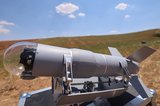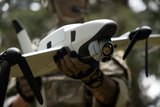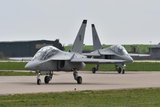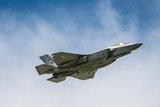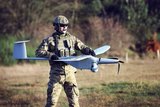AeroVironment will supply Puma 3 AE sUAS to two US-allied nations
Puma 3 AE provides tactical reconnaissance capabilities for land and maritime operations. (Photo: AeroVironment)
AeroVironment announced on 20 September that the company has received two firm-fixed-price US DoD FMS contracts worth $20.868 million to provide Puma 3 All Environment (AE) small unmanned aircraft systems (sUAS) to two unnamed allied nations.
The deal also comprises the supply of initial spares packages, training and contractor logistics support.
Although the details about the allied nations were not disclosed, the company pointed out that the customers are among the more than 50 allied governments employing AeroVironment’s UASs.
Shephard Defence Insight notes that the Puma 3 AE sUAS is part of the inventory of armed Forces in New Zealand, Ukraine, UK, US and Uzbekistan.
Puma 3 AE SUAS is a multi-mission capable, rugged, low-cost, man-portable, easy-to-operate system which provides tactical reconnaissance capabilities for land and maritime operations.
It has a wingspan of 9.2ft (2.8 m), weighs 15.4lb (7kg) and can operate up to 37.2 miles (60km) with AeroVironment’s Long-Range Tracking Antenna.
Operators can easily and quickly swap Puma 3 AE’s payloads, selecting between the Mantis i45 and the enhanced night variant, Mantis i45 N. The sUAS is also launchable by hand, bungee, rail or vehicle and is recoverable by deep-stall landing.
Related Equipment in Defence Insight
More from Air Warfare
-
![What might next-generation military aircrew training look like?]()
What might next-generation military aircrew training look like?
Changing roles for combat aircraft fleets, the rise of simulation and LVC technologies, and the increasing cost of flight hours could all be leading to a paradigm shift in military pilot training.
-
![2025 air market review: European defence independence, next-gen tech and export concerns dominate]()
2025 air market review: European defence independence, next-gen tech and export concerns dominate
This year’s (geo)political turmoil has challenged many long-prevailing assumptions, leading to far-reaching consequences for air forces and their supplier bases in industry worldwide – with five key trends in review for 2025.
-
![Poland air report: Drones, transport aircraft and tankers dominate potential procurement plans]()
Poland air report: Drones, transport aircraft and tankers dominate potential procurement plans
With a rising defence budget and equipment list, Poland’s air market is set to grow as the country continues to modernise its transport and helicopter fleets while seeking out uncrewed aerial vehicles and loitering munitions.
-
![Portugal signals interest in establishing A-29N final assembly line]()
Portugal signals interest in establishing A-29N final assembly line
As the launch customer for the NATO-configured variant, Portugal also took delivery of the first five A-29N aircraft from its order for 12, placed in 2024.
-
![Podcast: Critical Care episode 5 - Sustaining Europe’s frontline from Heidelberg]()
Podcast: Critical Care episode 5 - Sustaining Europe’s frontline from Heidelberg
As Europe ramps up defence investment in the wake of the Ukraine crisis, the spotlight is turning to how nations sustain their growing fleets.











